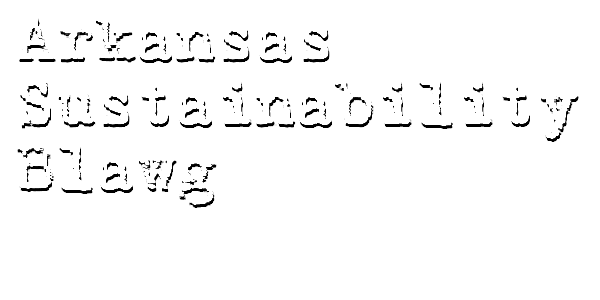According to the USGBC, “LEED initiatives including
legislation, executive orders, resolutions, ordinances, policies, and
incentives” are found in 384 cities and towns and 58 counties across 45
states.
One of those initiatives – and, at least according to the
USGBC’s online database, the only municipal initiative in Arkansas – is City of
Fayetteville Resolution 176-07.
Entitled, “A Resolution Establishing An Energy Efficient
Building Policy for the City of Fayetteville,” Resolution 176-07 passed on
October 2, 2007. It provides, in its
entirety:
Section 1: That the City Council of the City of Fayetteville, Arkansas hereby requires all new, city-owned buildings in excess of 5,000 square feet to achieve a minimum certification of LEED-Silver as issued by the US Green Building Council provided a favorable cost-benefit analysis is provided by a private architect or engineer and require all exempt building designs to include a LEED checklist with an emphasis on energy and water efficiency.
Resolution 176-07 does not carry the force of law. It is best considered a statement of public
policy. Unfortunately, as a statement of
public policy, particularly one with a national profile, Resolution 176-07 is
undermined by a significant ambiguity: what, exactly, is a “favorable
cost-benefit analysis”? Indeed, what if
even though the cost of building to the LEED-Silver status is not
disproportionately more expensive than building to a conventional standard, the
architect or engineer in question concludes that the cost-benefit analysis is
unfavorable because the proposed project will not result greater energy
efficiency?
The incorporation of LEED standards into land use law has
generated significant and spirited debate, and one of the frequent debate
points is that the empirical data does not indicate that LEED-certified
buildings are, in fact, better performing buildings. Henry Gifford asserted this very point – that
the USGBC promoted LEED as resulting in more energy efficient buildings even
though a study commissioned by the USGBC indicated that this was not the case –
in his now dismissed lawsuit, Gifford v.
USGBC. Similarly, the authors of the
2009 National Institution of Building Science Report on Building Rating and
Certification in the U.S. Building Community observed, “[t]here is very limited
data that correlates verifiable improvements in building performance with
building rating/certification system requirements. Many people view the few data sets that do
exist as controversial in terms of methodologies and conclusions drawn from
them.” The study concludes that “[t]here
are growing concerns that the implied guarantee of building energy performance
emanating from the building rating/certification/labeling systems may confuse
or mislead policy makers and the public.”
Thus, Resolution 176-07 runs the risk of failing to achieve
the very cause it advances. One way to
improve Resolution 176-07 would be to add a provision requiring the collection
and analysis of data from new municipal buildings built to the LEED-Silver
certification standard. This, it would
seem, encourages not only the energy-efficiency conscious green building
practices embodied in the Resolution, but also results in the creation of green
jobs.

No comments:
Post a Comment
I welcome your comments. By commenting on this blog, you accept the blog's terms of use. You must use your first and last name when posting, and you must stay on topic.